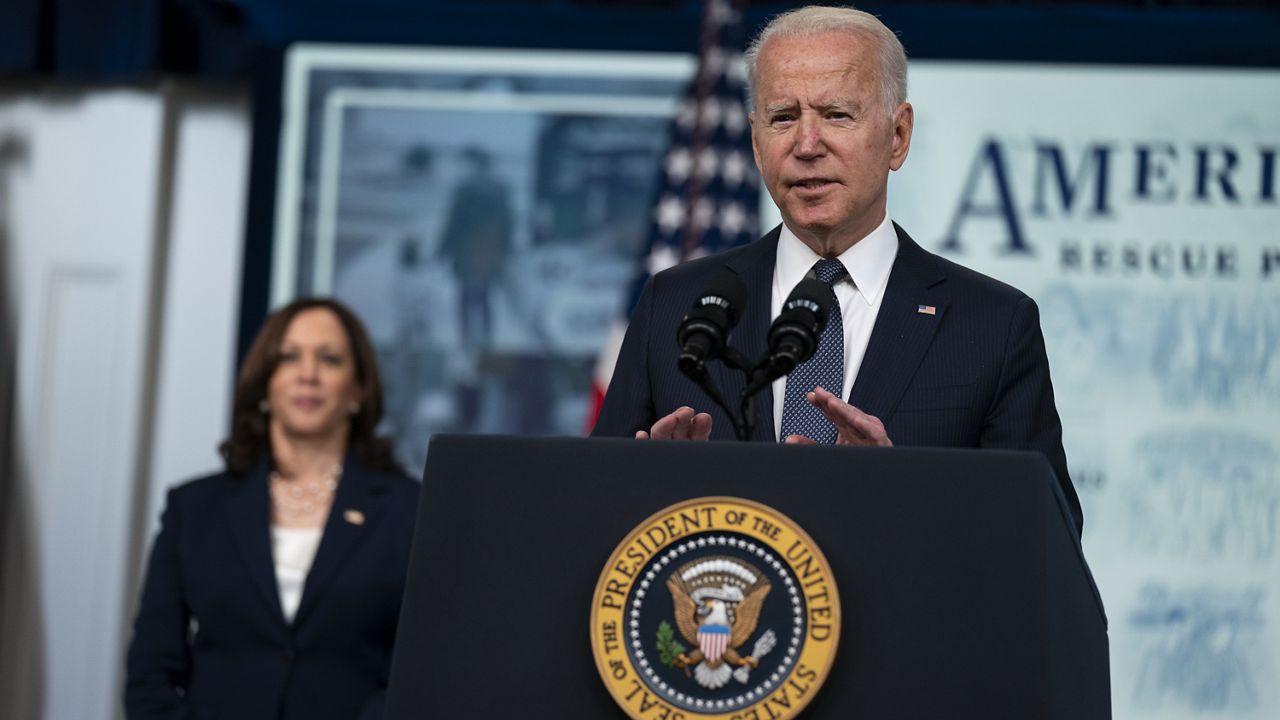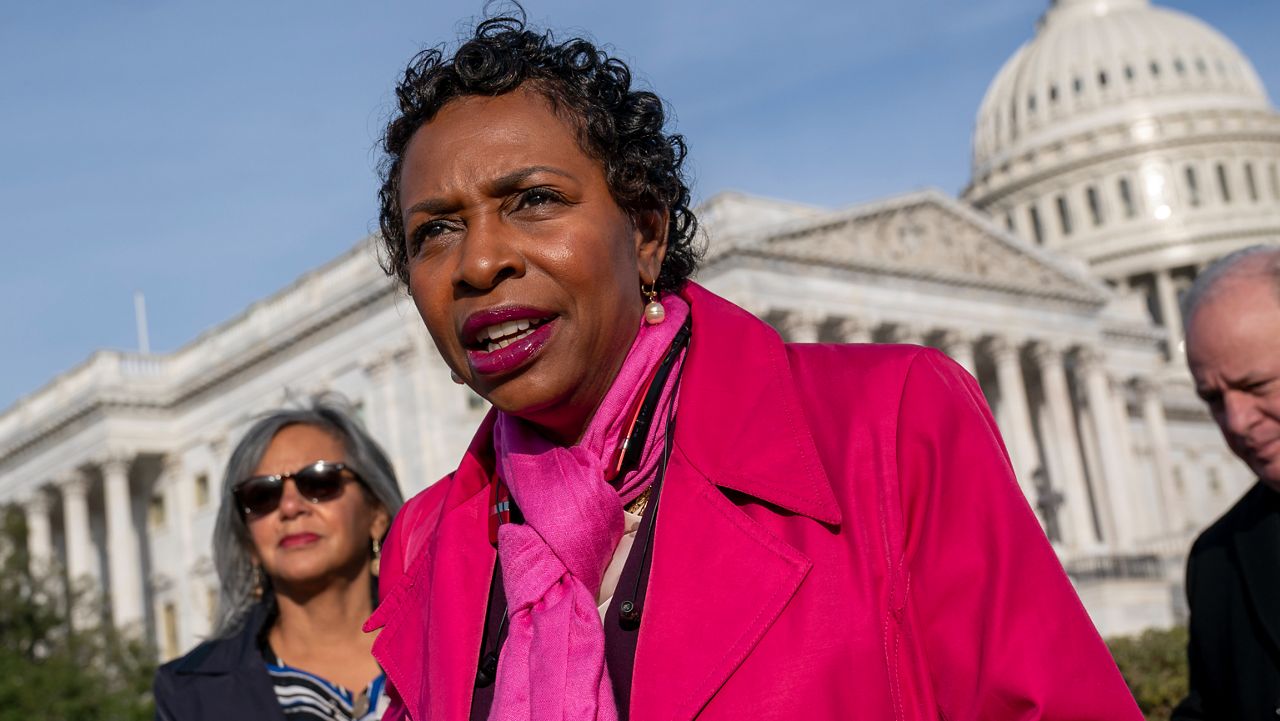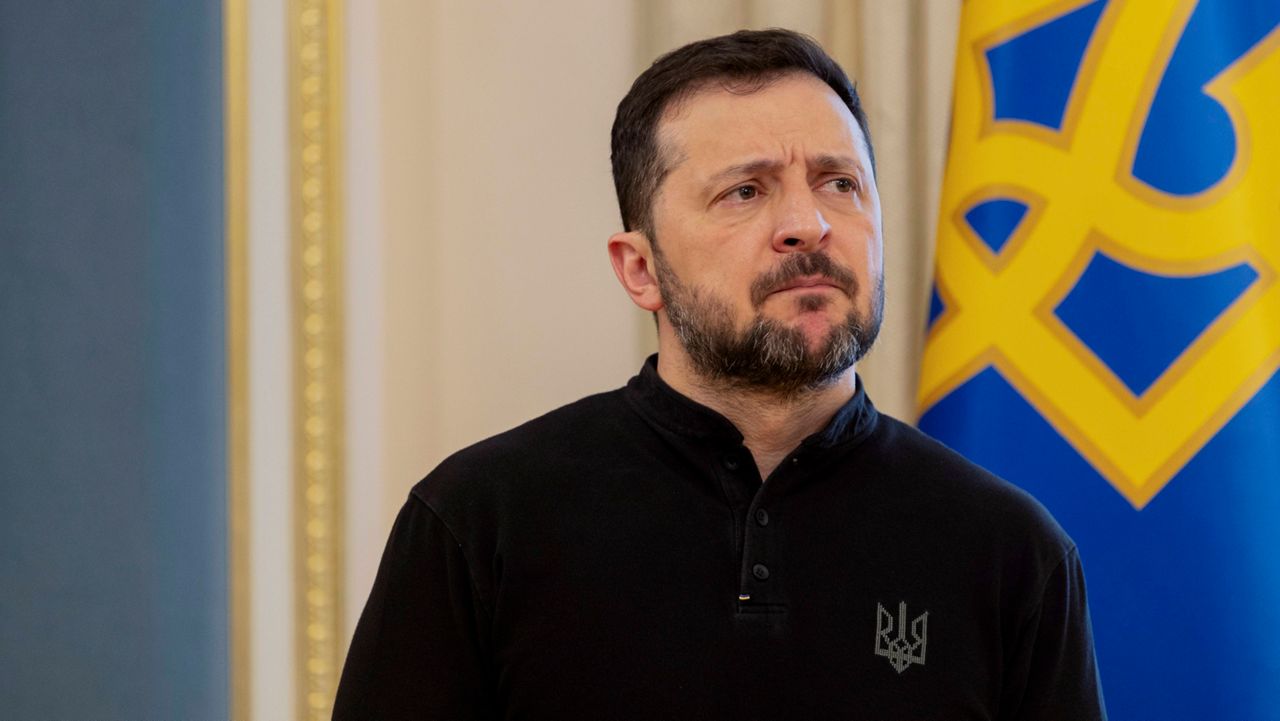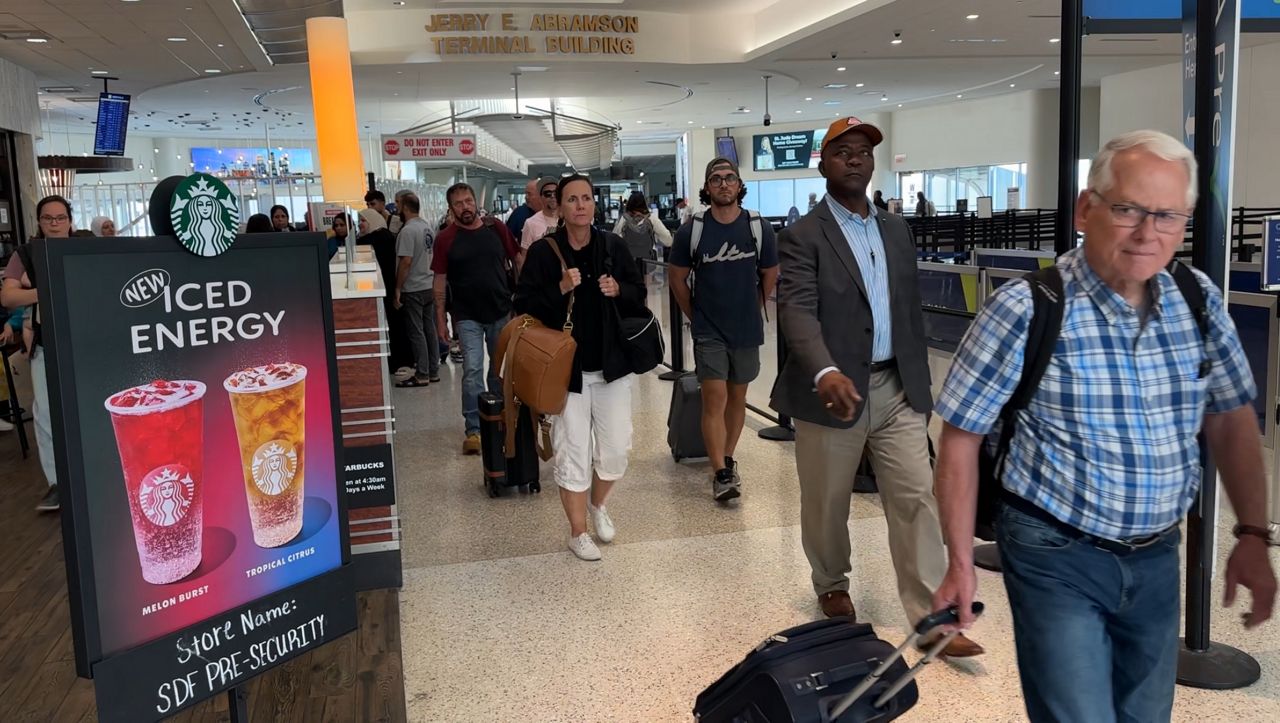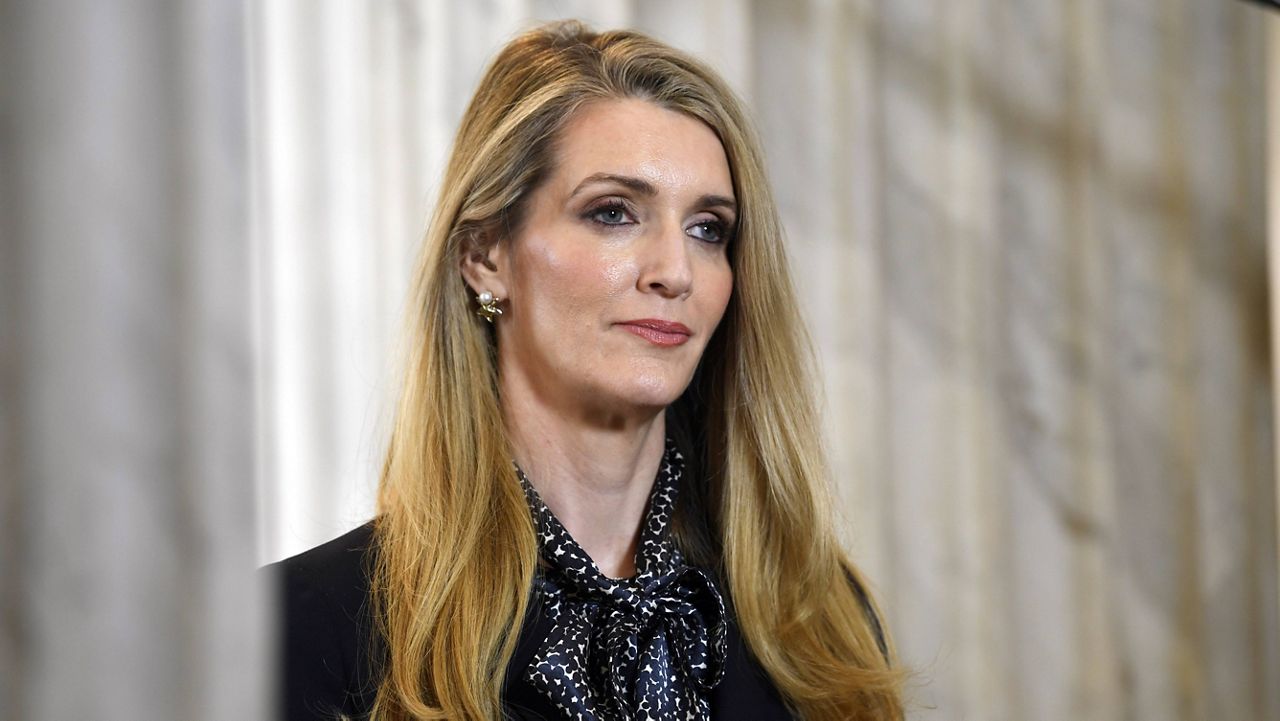President Joe Biden on Thursday touted the expanded child tax credit as a "transformative" means of reducing child poverty and providing much-needed relief to American families.
"I think this is one of the things that the vice president and I will be most proud of when our terms are up," President Biden said. "This can be life-changing for so many families."
Starting Thursday, millions of Americans will receive the first monthly payments from the child tax credit in their bank accounts; the expanded child tax credit was part of President Biden's $1.9 trillion COVID-19 relief bill, the American Rescue Plan, which Congressional Democrats passed in March without a single vote of Republican support.
“It’s a reflection of our belief that the people in the country who need a tax cut aren’t the people at the top,” the president said in remarks on the payments at the White House Thursday, where he was joined by nine families who will benefit from the expanded benefits.
“They owe you some ice cream or something for this,” the president, a noted ice cream fan, told the kids in the room, praising them for being patient.
Biden has held out the new monthly payments, which will average $423 per family, as the key to halving child poverty rates.
"To give you a sense of how transformative this is, this would be the largest-ever one-year decrease in child poverty in the history of the United States of America," Biden said.
But he is also setting up a broader philosophical battle about the role of government and the responsibilities of parents.
"Today is a historic day for our country," Biden wrote on Twitter. "Because beginning this morning, nearly all working families started receiving their first tax cut payment from the Child Tax Credit of up to $300 per child. Help is here with the American Rescue Plan."
In his remarks Thursday, he painted the payments as a “middle class tax cut” and a way to give “working families a fighting chance again.”
"For every child under the age of 6, a parent will get $3,600 a year," Biden said. "For every child 6 to 17, they'll get $3,000 per year. For example, a middle class family with two young children should expect to receive $7,200 a year to help raise their children."
"This can make it possible for a hardworking parent to say to his or her child: 'Honey, we get, you can get your new braces now," the president noted. "We can get you a tutor to help you in the math class you're having trouble with. We can get you the sports equipment you need to sign up for your first team you're going to play on."
Parents should start seeing the payments in their bank accounts Thursday, the president said, noting they would appear either as a direct deposit named ChildCTC or that people who hadn’t electronically filed their taxes could instead sign up on the new ChildTaxCredit.gov.
"They'll get the first half of this $3,600 starting today," Biden said. "Today. Today. And it will be paid out at $600 a month between now, July, and December. And then they'll get the rest of the payment next spring, around Tax Day."
Democrats see this as a landmark program along the same lines as Social Security, saying it will lead to better outcomes in adulthood that will help economic growth. But many Republicans warn that the payments will discourage parents from working and ultimately feed into long-term poverty.
Some 15 million households will now receive the full credit. The monthly payments amount to $300 for each child who is 5 and younger and $250 for those between 5 and 17. The payments are set to lapse after a year, but Biden is pushing to extend them through at least 2025.
Vice President Kamala Harris predicted the impact of the payments would be “generational” in her own remarks Thursday.
“Let us mark this day — Thursday, July 15, 2021 — as the day the American family got so much stronger,” she said, adding: “Help is here,” the administration’s original slogan to sell the COVID relief bill that passed in March, which funded the child tax payments.
Harris mentioned her mother and her own upbringing as an example of the various costs parents have, such as groceries, child care and rent.
“Even if [families] have enough to make ends meet, it is often just barely enough,” the vice president said. “In the wealthiest nation in the world, it should not be this way.”
Harris wasn't the only lawmaker to discuss their background as part of the tax credit push: Rep. Val Demings, who is running for a U.S. Senate seat in Florida to unseat Republican Sen. Marco Rubio, talked about her childhood in a Twitter post explaining why she supported the tax credit.
"I grew up the youngest of seven children in a two-bedroom home," Demings wrote. "My parents, a maid and janitor, worked hard every day to make ends meet."
Demings added that when she voted for the expanded child tax credit, "I thought of my parents and all parents who want the best for their children."
President Biden ultimately would like to make the payments permanent — and that makes this first round of payments a test as to whether the government can improve the lives of families. The president's initial plan, officials said, is to extend the credit for four years.
"The goal of this is not just to be one year," a senior administration official said Wednesday. "I think that people have somewhat different legislative strategies but I think that every advocate has the same goal: that we want this to be ultimately permanent. There's no disagreement on that the ultimate goal is for this to go on indefinitely."
An advertising blitz from the Democratic National Convention, the Democratic Senatorial Campaign Committee and the Democratic Congressional Campaign Committee touted the tax credit ahead of the crucial 2022 midterm elections.
Other current and former Democratic powerhouses touted the credit as well amid the White House push, including Georgia Sen. Raphael Warnock and former President Barack Obama.
Sen. Rubio, who successfully championed increasing the credit in 2017, said that the Democrats’ plans will turn the benefits into an “anti-work welfare check” because almost every family can now qualify for the payment regardless of whether the parents have a job.
“Not only does Biden’s plan abandon incentives for marriage and requirements for work, but it will also destroy the child-support enforcement system as we know it by sending cash payments to single parents without ensuring child-support orders are established,” Rubio said in a statement Wednesday.
An administration official disputed those claims. Treasury Department estimates indicate that 97% of recipients of the tax credit have wages or self-employment income, while the other 3% are grandparents or have health issues. The official, who requested anonymity to discuss internal analyses, noted that the credit starts to phase out at $150,000 for joint filers, so there is no disincentive for the poor to work because a job would just give them more income.
Colorado Democratic Sen. Michael Bennet said the problem is one of inequality. He said that economic growth has benefited the top 10% of earners in recent decades, while families are struggling with the rising costs of housing, child care and health care. He said his voters back in Colorado are concerned that their children will be poorer than previous generations and that requires the expansion of the child tax credit.
“It’s the most progressive change to America’s tax code ever,” Bennet told reporters.
Parenthood is an expensive undertaking. The Agriculture Department estimated in 2017, the last year it published such a report, that a typical family spends $233,610 to raise a child from birth to the age of 17. But wealthier children get far more invested in their education and upbringing, while poorer children face a constant disadvantage. Families in the top third of incomes spend about $10,000 more annually per child than families in the lower third.
The child tax credit was created in 1997 to be a source of relief, yet it also became a driver of economic and racial inequality as only parents who owed the federal government taxes could qualify for its full payment. Academic research in 2020 found that about three-quarters of white and Asian children were eligible for the full credit, but only about half of Black and Hispanic children qualified.
"For the first time in our nation's history, American working families are receiving monthly tax relief payments to help pay for essentials like doctor's visits, school supplies, and groceries," Treasury Secretary Janet Yellen said in a statement Wednesday. "This major middle-class tax relief and step in reducing child poverty is a remarkable economic victory for America -- and also a moral one."
The credit is $3,600 annually for children under age 6 and $3,000 for children ages 6 to 17. But six months of payments will be advanced on a monthly basis through the end of the year. This means eligible families will receive $300 monthly for each child under 6 and $250 per child older than that.
This is a change from last year, when the credit totaled $2,000 per child. Families who did not owe the government income taxes were also unable to claim the credit, a restriction that Biden and Congress lifted.
The payments begin to phase out at incomes of $75,000 for individuals, $112,500 for heads of household and $150,000 for married couples. Higher-income families with incomes of $200,000 for individuals and $400,000 for married couples can still receive the previous $2,000 credit.
If you filed taxes and the IRS already has your bank account information, the payments should be deposited directly into your account on the 15th of each month. The Treasury Department estimates that 35.2 million families will receive payments in July. But even if you haven't filed taxes in 2019 or 2020, you might still be eligible for the credit and can apply here.
Advocates say the monthly payments can help smooth out an impoverished family's income, making it easier for them to budget and less dependent on high-interest lenders.
Yes. Some people are used to the child tax credit enabling them to get a refund on their taxes. They might not want the monthly advance and about 1 million people have opted out, according to administration officials. People can unenroll here.
The Associated Press contributed to this report.




